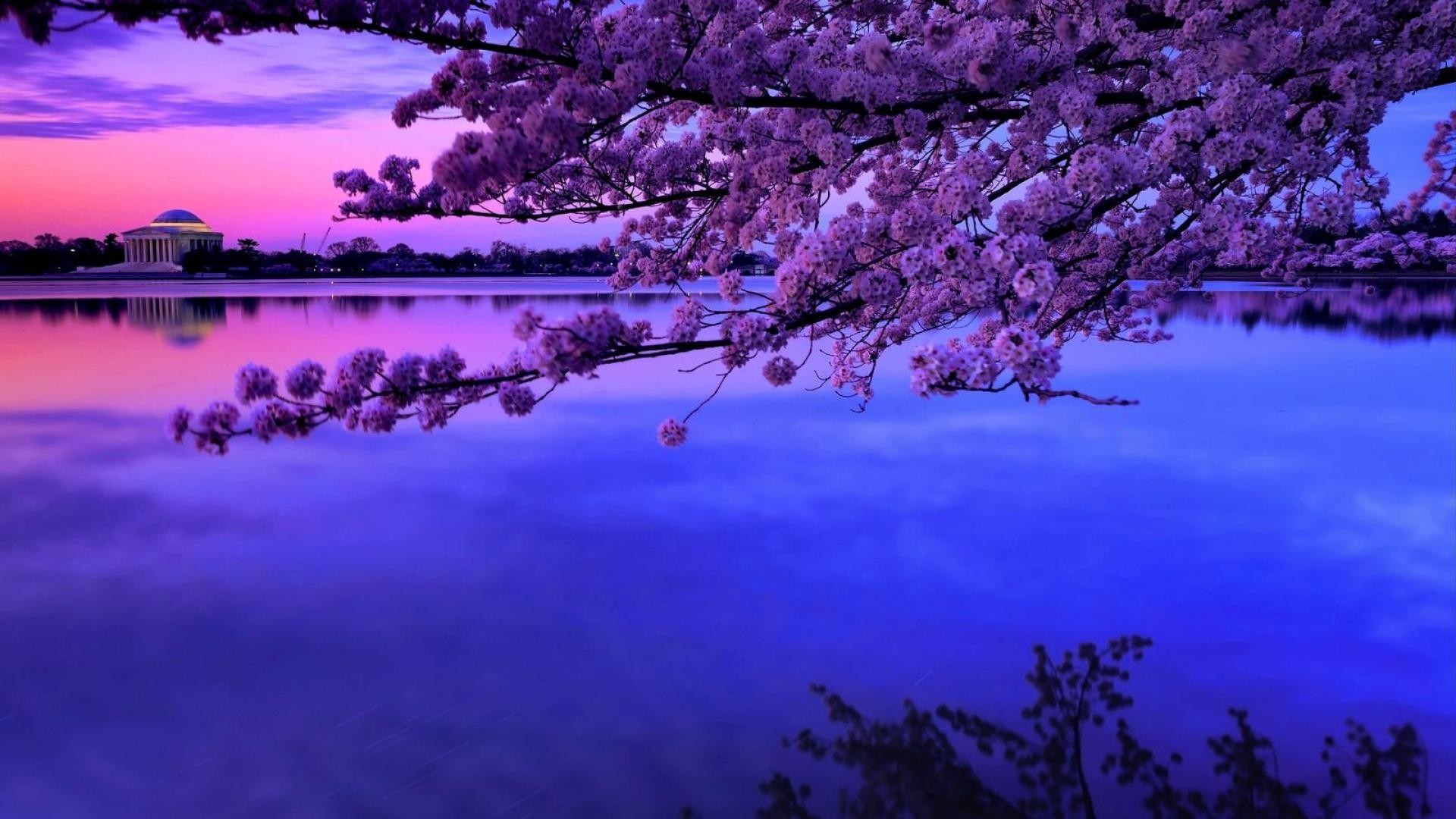

Some wild species such as Edo higan and the cultivars developed from them are in full bloom before the leaves open, giving a showy impression to the people who enjoy them. On the other hand, cultivars are clones propagated by grafting or cutting, so each tree of the same cultivar planted in the same place is in full bloom and scattered all at once. Wild species, even if they are the same species, are genetically different from one tree to another, so even if they are planted in the same place, there is some variation in the time when they reach full bloom. Many wild species and cultivars bloom from March to April in the Northern Hemisphere. Yoshino cherry, a cultivar propagated through grafting, reaches full bloom at the same time under the same environment.

For this reason, many researchers have named different scientific names for a particular type of cherry tree in different periods, and there is confusion in the classification of cherry trees.

In addition, since cherry trees are relatively prone to mutation and have a variety of flowers and trees, there are many varieties, such as variety which is a sub-classification of species, hybrids between species, and cultivar. The representative cultivars whose parent species is the Oshima cherry are Yoshino cherry and Kanzan Yoshino cherries are actively planted in Asian countries, and Kanzan is actively planted in Western countries. ascendens (syn, Prunus itosakura, Edo higan), and so on, which grow naturally in Japan, are easy to mutate, and especially Oshima cherry, which is an endemic species in Japan, tend to mutate into double-flowered, grow fast, have many large flowers, and have a strong fragrance therefore, Oshima cherry has produced much sakura called Sato-zakura Group as a base of cultivars because of its favorable characteristics. Oshima cherry, Yamazakura, Prunus pendula f. Since the Heian period, the Japanese have produced many cultivars by selecting superior or mutant individuals that were born from natural crossings of wild cherry trees, or by crossing them artificially, and then breeding them by grafting and cutting. Because cherry trees have a mutable trait, many cultivars have been created for cherry blossom viewing, especially in Japan. Many of the cherry trees currently enjoyed for cherry blossom viewing are not wild species but cultivar. Therefore, it is considered that the culture of viewing cherry blossoms and the production of cultivars have developed historically in Japan. On the other hand, in Japan, Prunus speciosa (Oshima cherry) and Prunus jamasakura (Yamazakura), which bloom large flowers suitable for cherry blossom viewing and tend to become large trees, were distributed in a fairly wide area of the country and close to people's living areas. In mainland China, there has been a culture of viewing plum blossoms since ancient times, and there were many wild species of cherry blossoms, but many of them had small flowers, and the distribution area of wild species of cherry blossoms, which bore large flowers suitable for hanami, was often limited to a small area away from people's living areas. Many of them were different from the typical cherry tree shapes and flowers for cherry blossom viewing that people today imagine.

In Europe and North America, however, there were not many wild cherry trees with many large flowers suitable for cherry blossom viewing. In the mainstream classification in Japan, China, and Russia, on the other hand, ornamental cherry trees are classified into the genus Cerasus, which consists of about 100 species separated from the genus Prunus, and the genus Cerasus does not include Prunus salicina, Prunus persica (Peach), Prunus mume, Prunus grayana, amongst others. In the mainstream classification in Europe and North America, cherry trees for ornamental purposes are classified into the genus Prunus which consists of about 400 species. Cherry blossoms have been described to have a beautiful smell and have been the inspiration for many candles and incense for household use. In the United States, cherry blossom viewing began to spread after Japan presented cherry blossoms as a token of friendship in 1912. In Europe, from the late 19th century to the early 20th century, Collingwood Ingram, an Englishman, collected and studied Japanese cherry blossoms, and created various ornamental cultivars, and the culture of cherry blossom viewing began to be spread. The cherry blossom is considered the national flower of Japan. They generally refer to ornamental cherry trees, and not cherry trees that produce fruit for eating. They are common in East Asia, including China, Korea and especially in Japan. Wild species of the cherry tree are widely distributed, mainly in the Northern hemisphere. A cherry blossom, also known as a Japanese cherry or sakura, is a flower of many trees of genus Prunus or Prunus subgenus.


 0 kommentar(er)
0 kommentar(er)
